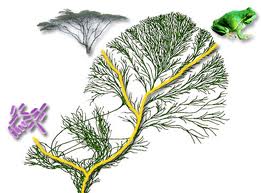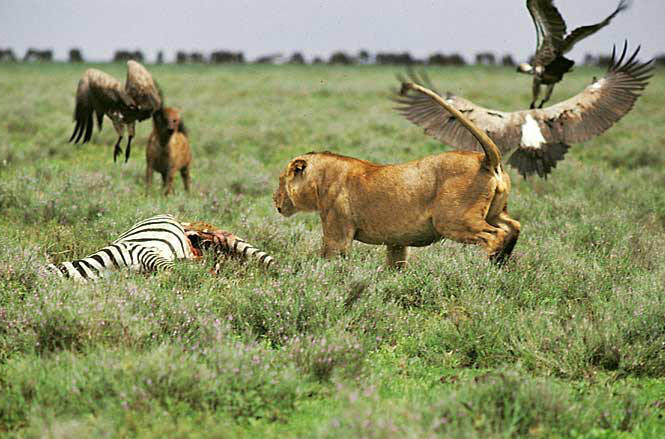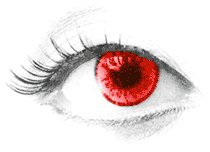



 |
 |
 |
 |
| EVOLUTION | MATTER & ENERGY | INFORMATION | INTERACTIONS |
| asdfasdf | |||
|
|
|||||||||||||||||||||||||||||
Changes/alignment to 2019-2020 CED
Homework Calendar MAKEUP LINKS
| MONDAY 12/12 | TUESDAY 12/13 | WEDNESDAY 12/14 | THURSDAY 12/15 | FRIDAY 12/16 | |
|
Kahoot Card Review we did this in class Clicker review w/answers HW: Study for multiple choice test TOMORROW |
TEST Chap 9 & 10 MITOSIS/MEIOSIS Watch Gregor Mendel video take notes in your BILL and fill in Genetics Vocab by THURS TO DO LIST Genetic Disorder Research project due TUES 1/10/18 |
Write 2 FRQ's in class
Watch
Gregor Mendel video |
Watch Gregor Mendel video take notes in your BILL and fill in Genetics Vocab by TODAY BILL Punnett Practice BILL NOTES HW: TO DO LIST Watch Bozeman video Chromosomal genetics (non-Mendelian) and take notes in your BILL by TOMORROW Punnett #1 & Punnett #2 From Kim Foglia 3.A.3. DUE TUES |
Watch Bozeman video Non-Mendelian Genetics and take notes in your BILL by TODAY BILL Punnett Practice BILL handouts Non Mendelian Punnetts Watch this video Multiplication & Addition Rules Fill in video notes by MONDAY TO DO LIST |
|
| MONDAY 12/18 | TUESDAY 12/19 | WEDNESDAY 12/20 | THURSDAY 12/22 | FRIDAY 12/23 | |
|
Watch this video
Multiplication & Addition Rules Fill in
video
notes by TODAY Watch Bozeman Mendelian Genetics fill in video notes Finish BILL Punnett Practice BILL NOTES HW:TO DO LIST |
Punnett
#1 &
Punnett #2 DUE
From Kim Foglia
3.A.3.
Pedigrees Practicing genetics problems BILL problems Solving pedigree probs #1 Solving pedigree probs #2 Solving pedigree probs #3 |
Disorder research project
DUE TUES 1/9 Fruit Fly practice Fruit fly lab log in as a GUEST This is the Wayback Machine link Original link not working NEW NON=FLASH LAB Fly Lab Directions Lab packet Punnetts
EARLY OUT AT NOON HW: TO DO LIST |
BEGIN HOLIDAY BREAK |
 |
|
| December 20-Jan 2 HAPPY HOLIDAYS | |||||
| MONDAY 1/1 | TUESDAY 1/2 | WEDNESDAY 1/3 | THURSDAY 1/4 | FRIDAY 1/5 | |
 "Read for understanding" that means take notes in your BILL, write down ?'s to ask in class, do a "Show what you know" in your BILL to organize info! Chap 11 & 12 |
|
Finish Fruit Fly practice Fruit Fly practice Fruit fly lab log in as a GUEST This is the Wayback Machine link Original link not working Fly Lab Directions Lab packet DUE
HW: TO DO LIST 1.WATCH Crossing over, linked genes, & Gene mapping and Fill in video notes BY TOMORROW 2.Probability problems #3 and Pedigree #4 due MON 3. Genome X-tra credit due FRI 4. Mitosis Test corrections DUE WED |
WATCH Crossing over, linked genes, & Gene mapping and Fill in video notes BY TODAY LUNCH TEST CORRECTION HELP Practice Linkage mapping & CO frequencies Practicing genetics problems BILL problems HW: Fruit fly packet due NOON FRI 1/12 |
Mitosis test scores go into
computer today/You can make corrections until WED 3:30 pm Genome-Extra credit due GENETICS slide show Sickle cell video HW:TO DO LIST STUDY STUDY STUDY! |
|
| MONDAY 1/8 | TUESDAY 1/9 | WEDNESDAY 1/10 | THURSDAY 1/11 | FRIDAY 1/12 | |
|
Probability Problems #3
Pedigrees #4 DUE From Kim Foglia Finish GENETICS slide show Sickle cell video Corn genetics Chi square BILL X-linked divorce HW:TO DO LIST |
Genetic Disorder Research project DUE Know your Disorders BILL ?'s Karyotypes Survival of the Sickest connections |
Mitosis/Meiosis TEST CORRECTIONS DUE BY 3:30
today Card review Semester test Check Kahoot Chemistry, Carbon, Water, & Molecules CELL Structure & Function Membranes,Transport Review Signaling Mitosis/Meiosis GENETICS |
SEMESTER TEST 4th HR Molecules, Chemistry, Carbon, Water, Cells, Transport, Signaling,Mitosis, Meiosis, Genetics (up to Tuesday) SEMESTER TESTS 1st Hr- 8:15-9:15 2nd Hr-9:30-10:30 3rd Hr- 10:45-11:45 LUNCH-11:45-12:40 4th Hr-12:40-1:40 Makeup I- 1:45-2:40 Makeup II- 2:45-3:40 SEMESTER TEST RESULTS HW: Start reading Chapter 13 WATCH these 3 videos to refresh your "Bio Brain" and take notes in your BILL by THURSDAY 1/18 Bozeman DNA & RNA part 1 Bozeman DNA & RNA part 2 Bozeman DNA Replication |
FRUITFLY PACKET DUE BY NOON TODAY SEMESTER TEST 5th HR Molecules, Chemistry, Carbon, Water, Cells, Transport, Signaling,Mitosis, Meiosis, Genetics SEMESTER TEST 5th Hr-8:15-9:15 6th Hr-9:30-10:30 7th Hr-10:45-11:45 NO LUNCH SERVED Makeup I- 1:25-2:20 Makeup II-2:25-3:20 SEMESTER TEST RESULTS HW: Start reading Chapter 13 WATCH these 3 videos to refresh your "Bio Brain" and take notes in your BILL by THURSDAY 1/18 Bozeman DNA & RNA part 1 Bozeman DNA & RNA part 2 Bozeman DNA Replication |
|
| MONDAY 1/15 | TUESDAY 1/16 | WEDNESDAY 1/17 | THURSDAY 1/18 | FRIDAY 1/19 | |
|
NO SCHOOL
Links to "Old Bio Stuff" for
DNA |
GENETICS in class FRQ's and short
answer I pick one from
LIST
and one surprise HW: Start reading Chapter 13 WATCH these 3 videos to refresh your "Bio Brain" and take notes in your BILL by THURSDAY 1/18 Bozeman DNA & RNA part 1 Bozeman DNA & RNA part 2 Bozeman DNA Replication |
HW: Start reading Chapter 13 WATCH these 3 videos to refresh your "Bio Brain" and take notes in your BILL by THURSDAY 1/18 Bozeman DNA & RNA part 1 Bozeman DNA & RNA part 2 Bozeman DNA Replication |
HW: Start reading Chapter 13 WATCH these 3 videos to refresh your "Bio Brain" and take notes in your BILL by THURSDAY 1/18 Bozeman DNA & RNA part 1 Bozeman DNA & RNA part 2 Bozeman DNA Replication |
|
|
| MONDAY 1/22 | TUESDAY 1/23 | WEDNESDAY 1/24 | THURSDAY 1/25 | FRIDAY 1/26 | |
|
|
|
|
Semester test corrections due
|
||
HeLa cell discussion ? due
Watch
Video clip
Practice
Genetics Stuff
Probability
practice
|
Slide
shows
POWERPOINT version DOWNLOAD
POWERPOINT Mr. Kuffke's Prezi's
HOW DO YOU SAY IT? |
Chapter 11- Mendel and the Gene Idea Chapter 12-Chromosomal basis of Inheritance
BILL Punnett
Practice
BILL
NOTES Making Punnett Predictions Punnett blank
Funnies |
| BOZEMAN BIOLOGY VIDEOS | |||
|
Biology Essentials Mendelian Genetics Mon Mendelian Genetics |
Genetics
Blood types |
Biology Essentials Advanced Genetics |
Chromosomal Genetics |
|
Beginnners Guide to Punnett Squares |
Chi Square Test |
X Inactivation 4/26/12 |
Epigenetics |
|
Linked Genes Genetic recombination & Gene mapping |
AP Bio Lab 7 Genetics of Drosophila |
Multiplication & Addition Rules | Chi square |
| NOVA EPIGENETICS |
Epigenetics TED Talks You are what your grandparents ate |
RADIOLAB Epigenetic inheritance |
HHMI X chromosome Inactivation |
| Dad's stress affects brain development | Epigenetics & Dad's diet | IT'S OK TO BE SMART? Epigenetics |
Blue Fugates |
| HHMI-Sickle cell (15 min) | Tay
Sachs- One Wrong letter (9 min) |
OI-
Baby made of glass (8 min) |
miRNA's- Controlling aging |
| Sex determination |
3
min video Ted ED- Mendel's peas 2 minute Classroom Dominant vs Recessive (1 min) Punnett Basics (3 min) |
It's OK to be
SMART Epigenetics |
Calico cat genetics |
| Gene Linkage and mapping | |||
|
Solving Pedigree Problems #1 |
Solving Pedigree Problems #2 |
Solving Pedigree Problems #3 |
2
minute videos Inheritance patterns-Reading pedigree charts |
| VIDEOS University of California College Prep AP BIOLOGY http://www.ucopenaccess.org/course/view.php?id=8
YouTube videos
Fruit Fly Courtship
|
NOVA Tale of two mice Cloned cats Hemoglobin |
| Handouts
M & M lab |
VOCAB
Campbell
Ch
14 Reading guide Campbell
Ch 15 Reading guide Genetics
problems |
|
Mr. Knight Genetics problems- Genetics worksheet Sex linked practice problems Linkage notes Genetic disorders Variation in Mendelian genetics Change in chromosome number Human genetic disorders Chi square notes |
Mr. Gallant Genetics problems Mr. Knuffke Genetics problems Nancy Monson & Sue Black LAB DIRECTIONS ANALYSIS QUESTIONS DATA TABLE |
Remember: Biology is more than "just the
facts". It's all about connections.
(That said... you have to know the vocab and concepts to be able to see the
"big picture" and make those connections)
DOWNLOAD
POWERPOINT
VIEWER HERE
to watch Powerpoint presentations
| Review Games Review What you should already know? (Old BIO I & II slideshows/review games) Chapter 11 & 12
Review
Chap 11 & 12 Genetics, Human disorders
Non-Mendelian Inheritance quiz
Biology 30 quizzes |
Science Geek Biology Corner |
|
INTERNET REVIEW GAMES
Biology in Focus log in
University of California Open
Access Genetics problems
practice
Biology Junction-Genetics
practice w/answers
Punnett
squares/Pea crosses
Mrs. Brumley's quizzes
Biology 101
Mendel's
Pea Experiments Interactive Drag 'n drop Genetics Internet Practice with Punnetts Genetics with Sponge Bob (pdf) Genetics with SpongeBob 2 (pdf)
The Princess and the Wrinkled Pea Pedigree
interactive Sex linked inheritance problems #1
Sex linked inheritance problem #2
Genetics exam w/ answers- Bio2300
University of Kentucky- BIOWEB
Genetics quiz- Interactive Mrs. Ferguson's Genetics & Meiosis self quiz Biology corner chromosome quiz COOL VIDEO
|
TUTORIALS BIOCOACH-Mendelian Inheritance
Mendel's experiments
Genetic Science Learning Center University of Colorado- Genetics
BBC-Science Guru
Hybrid crosses
The Princess and the Wrinkled Pea Clermont College-Linked and Sex Linked Genes National Human Genome Research Institute
University of Kentucky- BIOWEB Virtual Fly lab
General info
Vestigial wing data
Virtual Fruit Fly lab
Chi Square |
ANIMATIONS Nondisjunction in Meiosis I Nondisjunction in Meiosis II Segregation animation Random orientation of chromosomes during meiosis Inversion Access Excellence-Graphics Gallery
NOVA
PBS-Epigenetics Top 6 genetics stories of 2006 The genes we share with yeast, flies, & worms
Science in the news Mendel Exhibit-Man Behind the Peas Weird genetics
GFP
website
Fainting
goats (YouTube)
|
|||||||||||||
| Sickle cell | GENETIC DISORDERS | Huntington's |
| Color Blindness | Are you color blind? | Duchenne Muscular Dystrophy |
| Hemophilia | Down syndrome | Klinefelter syndrome |
| Sex chromosome disorders | Sickle cell and malaria video | The Gene that Changed the World |
| Sickle cell disease |
Human disorders, mutations, cancer Clermont college |
Colin Farrell and Angelman's syndrome |
| Blue People of Kentucky | Prader Willi syndrome | Triple X syndrome |
| Conjoined twins |
|
Use of our material: We have worked very hard
on activities, Powerpoints/games/worksheets, etc to make this a
resource for our students. If you are using our materials, please
give us credit for our efforts by listing us as a source with links
to our site. DO NOT USE these materials for commercial purposes.
PLEASE DO NOT POST ANSWER KEYS FOR OUR MATERIALS TO OTHER WEBSITES! |
Big Idea 3: Living systems store, retrieve, transmit
and respond to information essential to life processes.
Essential knowledge 3.A.3: The chromosomal basis of inheritance
provides an understanding of the pattern of passage (transmission) of
genes from parent to offspring.
a. Rules of probability can be applied to analyze passage of single gene
traits from parent to offspring.
b. Segregation and independent assortment of chromosomes result in
genetic variation.
Evidence of student learning is a demonstrated understanding of each
of the following:
1. Segregation and independent assortment can be applied to
genes that are on different chromosomes.
2. Genes that are adjacent and close to each other on the same
chromosome tend to move as a unit; the probability that they will
segregate as a unit is a function of the distance between
them.
3. The pattern of inheritance (monohybrid, dihybrid, sex-linked,
and genes linked on the same homologous chromosome) can often be
predicted from data that gives the parent genotype/
phenotype and/or the offspring phenotypes/genotypes.
c. Certain human genetic disorders can be attributed to the inheritance
of single gene traits or specific chromosomal changes,
such as
nondisjunction.
To foster student understanding of this concept, instructors can choose
an illustrative example such as:
•
Sickle cell anemia
•
Tay-Sachs disease
•
Huntington's disease
•
X-linked color blindness
•
Trisomy 21/Down syndrome
•
Klinefelter's syndrome
d. Many ethical, social and medical issues surround human genetic
disorders.
To foster student understanding of this concept, instructors can choose
an illustrative example such as:
•
Reproduction issues
•
Civic issues such as ownership of genetic information, privacy,
historical contexts, etc.
Learning Objectives:
LO 3.12
The student is able to construct a representation that
connects the process of meiosis to the passage of traits from parent
to offspring. [See SP 1.1, 7.2]
LO 3.13
The student is able to pose questions about ethical, social
or medical issues surrounding human genetic disorders. [See SP
3.1]
LO 3.14
The student is able to apply mathematical routines to
determine Mendelian patterns of inheritance provided by data
sets. [See SP 2.2]
Essential knowledge 3.A.4: The inheritance pattern of many traits cannot
be explained by simple Mendelian genetics.
a. Many traits are the product of multiple genes and/or physiological
processes.
Evidence of student learning is a demonstrated understanding of the
following:
1. Patterns of inheritance of many traits do not follow ratios
predicted by Mendel's laws and can be identified by quantitative
analysis,
where observed phenotypic ratios statistically differ
from the predicted ratios.
b. Some traits are determined by genes on sex chromosomes.
To foster student understanding of this concept, instructors can choose
an illustrative example such as:
•
Sex-linked genes reside on sex chromosomes (X in humans).
•
In mammals and flies, the Y chromosome is very small and
carries few genes.
•
In mammals and flies, females are XX and males are XY; as such,
X-linked recessive traits are always expressed in males.
•
Some traits are sex limited, and expression depends on the sex of
the individual, such as milk production in female mammals and
pattern baldness in males.
c. Some traits result from nonnuclear inheritance.
Evidence of student learning is a demonstrated understanding of each
of the following:
1. Chloroplasts and mitochondria are randomly assorted to gametes and
daughter cells; thus, traits determined by
chloroplast and mitochondrial DNA do not follow simple Mendelian
rules.
2. In animals, mitochondrial DNA is transmitted by the egg and not by
sperm; as such, mitochondrial-determined traits are maternally
inherited.
✘✘Epistasis and pleiotropy are
beyond the scope of the course and the AP Exam.
Learning Objectives:
LO 3.15
The student is able to explain deviations from Mendel's
model of the inheritance of traits. [See SP 6.5]
LO 3.16
The student is able to explain how the inheritance
patterns of many traits cannot be accounted for by Mendelian
genetics. [See SP 6.3]
LO 3.17
The student is able to describe representations of an
appropriate example of inheritance patterns that cannot be
explained by Mendel's model of the inheritance of traits.
See SP 1.2]
Enduring understanding 3.C: The processing of genetic information is
imperfect and is a source of genetic variation.
Essential knowledge 3.C.1: Changes in genotype can result in changes in
phenotype.
a. Alterations in a DNA sequence can lead to changes in the type or
amount of the protein produced and the consequent phenotype.
[See also 3.A.1]
Evidence of student learning is a demonstrated understanding of the following:
acid or protein and the phenotypes that are conferred by the
protein.
b. Errors in DNA replication or DNA repair mechanisms, and external
factors, including radiation and reactive chemicals, can cause random
changes, e.g., mutations in the DNA.
Evidence of student learning is a demonstrated understanding of the
following:
1. Whether or not a mutation is detrimental, beneficial or neutral
depends on the environmental context. Mutations are the primary
source of genetic variation.
c. Errors in mitosis or meiosis can result in changes in phenotype.
Evidence of student learning is a demonstrated understanding of each
of the following:
1. Changes in chromosome number often result in new phenotypes,
including sterility caused by triploidy and increased vigor of other
polyploids. [See also 3.A.2]
2. Changes in chromosome number often result in human disorders with
developmental limitations, including Trisomy 21
(Down
syndrome) and XO (Turner syndrome). [See also 3.A.2,
3.A.3]
d. Changes in genotype may affect phenotypes that are subject to natural
selection. Genetic changes that enhance survival and reproduction
can be selected by environmental conditions. [See
also 1.A.2, 1.C.3]
To foster student understanding of this concept, instructors can choose
an illustrative example such as:
•
Antibiotic resistance mutations
•
Pesticide resistance mutations
•
Sickle cell disorder and heterozygote advantage
Evidence of student learning is a demonstrated understanding of the
following:
1. Selection results in evolutionary change.
LO 3.24
The student is able to predict how a change in genotype,
when expressed as a phenotype, provides a variation that can be
subject to natural selection. [See SP 6.4, 7.2]
LO 3.25
The student can create a visual representation to
illustrate how changes in a DNA nucleotide sequence can result in
a change in the polypeptide produced. [See SP 1.1]
LO 3.26
The student is able to explain the connection between
genetic variations in organisms and phenotypic variations in
populations.
[See SP 7.2]
Essential knowledge 3.C.2: Biological systems have multiple processes
that
increase genetic variation.
a. The imperfect nature of DNA replication and repair increases
variation.
b. The horizontal acquisitions of genetic information primarily in
prokaryotes via transformation (uptake of naked DNA),
transduction (viral transmission of genetic information), conjugation
(cell-to-cell transfer) and transposition (movement
of DNA
segments within and between DNA molecules) increase variation.
[See also 1.B.3]
✘✘Details and specifics about the
various processes are beyond the scope of the course and the AP Exam
c. Sexual reproduction in eukaryotes involving gamete formation,
including crossing-over during meiosis and the random assortment of
chromosomes during meiosis, and fertilization serve to increase
variation. Reproduction processes that increase genetic variation are
evolutionarily conserved and are shared by various organisms. [See
also 1.B.1, 3.A.2, 4.C.2, 4. C3]
✘✘
The details of sexual
reproduction cycles in various plants and animals are beyond the scope
of the course and the AP Exam.
However, the similarities of the processes that provide for genetic
variation are relevant and should be the focus of instruction.
Learning Objectives:
LO 3.27
The student is able to compare and contrast processes by
which genetic variation is produced and maintained in organisms
from multiple domains. [See SP 7.2]
LO 3.28
The student is able to construct an explanation of the
multiple processes that increase variation within a population. [See
SP 6.2]
Enduring understanding 4.C: Naturally occurring
diversity among and between components within biological
systems affects interactions with the
environment.
Essential knowledge 4.C.1: Variation in molecular
units provides cells with a wider range of functions.
a. Variations within molecular classes provide cells and organisms
with a wider range of functions.
[See also 2.B.1, 3.A.1, 4.A.1,
4.A.2]
To foster student understanding of this concept, instructors can choose an
illustrative example such as:
• Different types of
phospholipids in cell membranes
• Different types of
hemoglobin
•
MHC proteins
•
Chlorophylls
• Molecular diversity of
antibodies in response to an antigen
b. Multiple copies of alleles or genes (gene duplication) may provide
new phenotypes. [See also 3.A.4, 3.C.1]
Evidence of student learning is a demonstrated understanding of each
of the following:
1. A heterozygote may be a more advantageous genotype than a homozygote
under particular conditions, since with two different
alleles, the organism has two forms of proteins that may provide functional
resilience in response to environmental
stresses.
2. Gene duplication creates a situation in which one copy of the
gene maintains its original function, while the duplicate may
evolve a
new function.
To foster student understanding of this concept, instructors can choose an
illustrative example such as:
• The antifreeze gene in
fish
LO 4.22
The student is able to construct explanations based on
evidence of how variation in molecular units provides cells with a
wider range of functions. [See SP 6.2]
Essential knowledge 4.C.2:
Environmental factors influence the
expression of the genotype in an
organism.
a. Environmental factors influence many traits both directly and
indirectly. [See also 3.B.2, 3.C.1]
To foster student
understanding of this concept, instructors can choose an illustrative
example such as:
• Height and
weight in humans
•
Flower color based on soil pH
• Seasonal fur
color in arctic animals
•
Sex determination in reptiles
• Density of
plant hairs as a function of herbivory
• Effect of
adding lactose to a Lac + bacterial culture
• Effect of
increased UV on melanin production in animals
• Presence of
the opposite mating type on pheromones
production in yeast and other fungi
b. An organism's adaptation to the local environment reflects a
flexible response of its genome.
To foster student understanding of this concept, instructors can choose an
illustrative example such as:
• Darker fur in
cooler regions of the body in certain mammal
species
•
Alterations in timing of flowering due to climate changes
Learning Objectives:
LO 4.23
The student is able to construct
explanations of the
influence of environmental factors on the phenotype of an
organism. [See SP 6.2]
LO 4.24
The student is able to predict the
effects of a change
in an environmental factor on the genotypic expression of
the
phenotype.
[See SP 6.4]
Check life cycles rubric
Check Chi2 #1 & #2
MC review
Draw genetic recombination (Crossing over, Segregation, Independent
assortment, random fertilization)
| Chemistry of Life | Cells | Cell Division | Metabolism |
| Genetics | DNA, RNA, Proteins | Evolution | Parade |
| Plants | Body systems | Ecology | Exam Prep |
| OTHER UNITS | Riedell Science Home | APBIO Teacher help | Riedell Bio Teacher help |
| If you find something useful, would like to suggest new links, or have corrections...please let me know. |
SOURCES:
 http://sps.k12.ar.us/massengale/genetics%20tutorial.htm
http://sps.k12.ar.us/massengale/genetics%20tutorial.htm
 Christmas tree animation:
http://www.fg-a.com/christmas4.shtml
Christmas tree animation:
http://www.fg-a.com/christmas4.shtml
Pedigree Practice from:
Tracy Jackson @
http://home.att.net/~tljackson/neville.html
Pedigree Practice #1
Pedigree Practice #2
Pedigree Practice #3
| MONDAY 12/12 | TUESDAY 12/13 | WEDNESDAY 12/14 | THURSDAY 12/15 | FRIDAY 12/16 |
|
Kahoot Card Review we did this in class Clicker review w/answers HW: Study for multiple choice test TOMORROW |
TEST Chap 9 & 10
MITOSIS/MEIOSIS Watch Gregor Mendel video take notes in your BILL and fill in Genetics Vocab by THURS TO DO LIST Genetic Disorder Research project due TUES 1/10/18 |
Write 2 FRQ's in class
Watch
Gregor Mendel video |
Watch Gregor Mendel video take notes in your BILL and fill in Genetics Vocab by TODAY BILL Punnett Practice BILL NOTES HW: TO DO LIST Watch Bozeman video Chromosomal genetics (non-Mendelian) and take notes iChromosomal Gen your BILL by TOMORROW Punnett #1 & Punnett #2 From Kim Foglia 3.A.3. DUE TUES |
Watch Bozeman video Non-Mendelian Genetics and take notes in your BILL by TODAY BILL Punnett Practice BILL handouts Non Mendelian Punnetts Watch this video Multiplication & Addition Rules Fill in video notes by MONDAY TO DO LIST |
| MONDAY 12/18 | TUESDAY 12/19 | WEDNESDAY 12/20 | THURSDAY 12/22 | FRIDAY 12/23 |
|
Watch this video
Multiplication & Addition Rules Fill in
video
notes by TODAY Watch Bozeman Mendelian Genetics fill in video notes Finish BILL Punnett Practice BILL NOTES HW:TO DO LIST |
Punnett
#1 &
Punnett #2
DUE
From Kim Foglia
3.A.3.
|